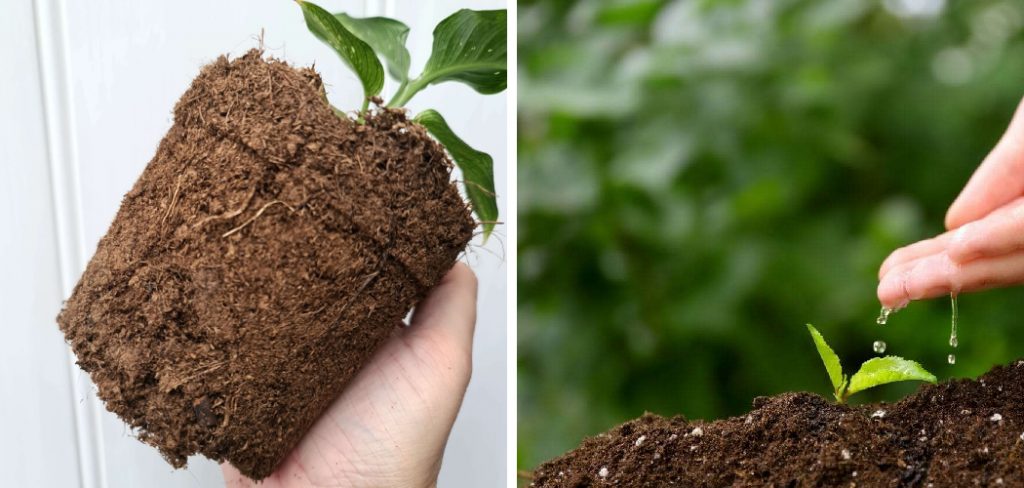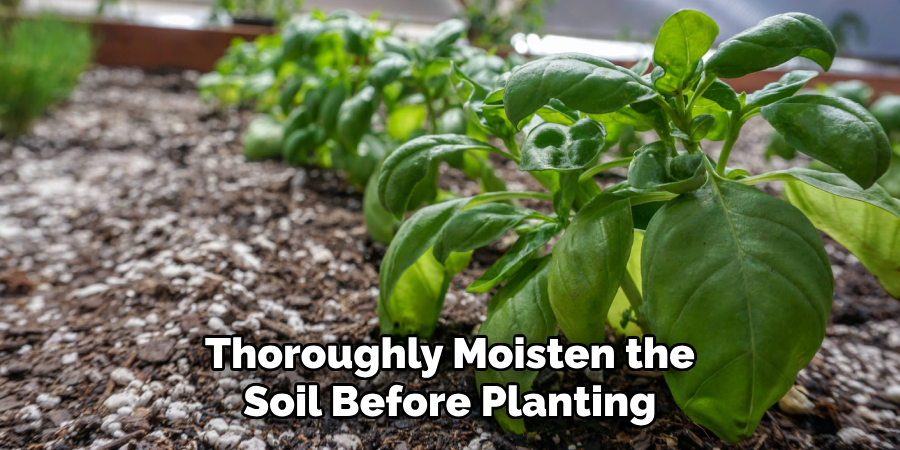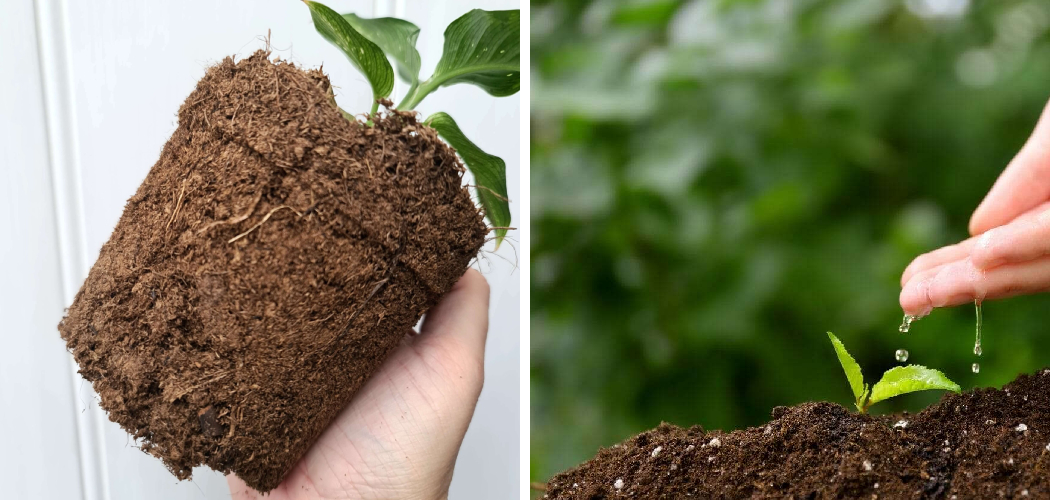To fix hydrophobic potting soil, thoroughly wet the soil by gradually adding water and mixing it in until the water is evenly distributed throughout. Additionally, consider using a wetting agent or soil conditioner to help retain moisture in the soil.

Why Hydrophobic Potting Soil Fails
Hydrophobic potting soil can cause various issues for your plants. It fails to absorb water properly, leading to inadequate hydration for your plants. This hydrophobicity in potting soil can be caused by factors like high temperatures, low humidity, or the presence of certain organic materials.
The soil particles repel water, forming a water-resistant layer on the surface. This prevents water from penetrating the soil and reaching the plant roots. Consequently, plant growth is adversely affected as the roots struggle to uptake the necessary moisture and nutrients.
To fix hydrophobic potting soil, you can try pre-wetting the soil before planting, incorporating organic matter, or using a wetting agent. These measures will help improve water absorption and ensure your plants receive the hydration they need to thrive. Remember, addressing hydrophobicity in potting soil is essential for successful plant growth.
How to Fix Hydrophobic Potting Soil: Step by Step Guide
Recognizing Hydrophobic Potting Soil
Hydrophobic potting soil is a common issue for gardeners. The first step is recognizing the signs of hydrophobicity. If the water quickly runs off the soil surface, leaving it dry and thirsty, it’s likely hydrophobic. Another indicator is when water forms puddles or simply sits on top of the soil.
A simple test can confirm the hydrophobicity; pour water onto the soil and observe its absorption. Hydrophobic soil will repel the water, causing it to bead up and roll off. To fix hydrophobic potting soil, thoroughly soak it with water.
Adding an agent like liquid dish soap or a wetting agent can also help break down the soil’s water-repelling properties. Repeat the process if necessary until the soil is evenly moistened. By recognizing the signs and taking the right steps, you can easily fix hydrophobic potting soil and ensure your plants receive the water they need for optimal growth.
Resolving Hydrophobic Potting Soil Issues
Having trouble with hydrophobic potting soil? No worries! Follow this step-by-step guide to resolve the issue. Rehydrating potting soil can be done using simple diy methods or commercial products. By carefully following these guidelines, you can fix the hydrophobicity and ensure proper moisture absorption in your plants.
Preventing Hydrophobicity In Potting Soil
Proper watering techniques are essential to prevent hydrophobicity in potting soil. When watering, make sure to water slowly and evenly, allowing the soil to absorb the moisture. Avoid overwatering, as it can lead to compaction and waterlogged conditions. Another crucial step is to choose the right potting mix.
Opt for well-balanced mixes that include organic matter, such as peat moss or compost, which help retain moisture. Avoid potting mixes that are predominantly composed of sand or clay, as they tend to dry out quickly and become hydrophobic. Additionally, consider incorporating water-holding additives or hydrogels into the potting mix to improve water retention.
Regularly monitoring soil moisture levels and adjusting watering practices accordingly can also prevent hydrophobicity. By following these best practices, you can maintain healthy potting soil that efficiently absorbs and retains water for your plants’ optimal growth.
Frequently Asked Questions For How To Fix Hydrophobic Potting Soil
How Do You Fix Hydrophobic Potting Soil?
To fix hydrophobic potting soil, thoroughly moisten the soil before planting. Water slowly and thoroughly, ensuring the water reaches all parts of the soil. If the soil remains hydrophobic, mix in a wetting agent such as liquid dish soap or compost tea to improve water absorption.

Avoid overwatering, as it can lead to other issues like root rot.
What Causes Potting Soil To Become Hydrophobic?
Potting soil becomes hydrophobic when it dries out completely, causing the organic matter to repel water instead of absorbing it. This can happen due to lack of proper watering, excessive use of dry amendments, or prolonged exposure to sunlight and heat.
Can You Reuse Hydrophobic Potting Soil?
Yes, you can reuse hydrophobic potting soil. Before reusing, you must correct the hydrophobic condition by thoroughly wetting the soil, adding a wetting agent, or mixing it with fresh, moisture-retaining soil. However, it is important to assess the soil’s overall health and consider amending it with organic matter to ensure optimal plant growth.
Conclusion
To sum it up, fixing hydrophobic potting soil is a task that requires patience and the right techniques. By first identifying the issue and understanding its causes, you can then take the necessary steps to improve the soil’s water absorption.
One effective method is mixing in organic matter, such as compost or peat moss, to increase the soil’s water-holding capacity. Additionally, using a wetting agent can enhance its ability to retain moisture. Regularly monitoring the soil’s moisture levels and adjusting watering practices accordingly is also crucial.
Remember to water slowly and deeply to ensure thorough hydration. Finally, proper drainage is essential to prevent waterlogging. By following these steps and taking good care of your plants, you can overcome hydrophobic potting soil and create a favorable environment for healthy and thriving plant growth.

